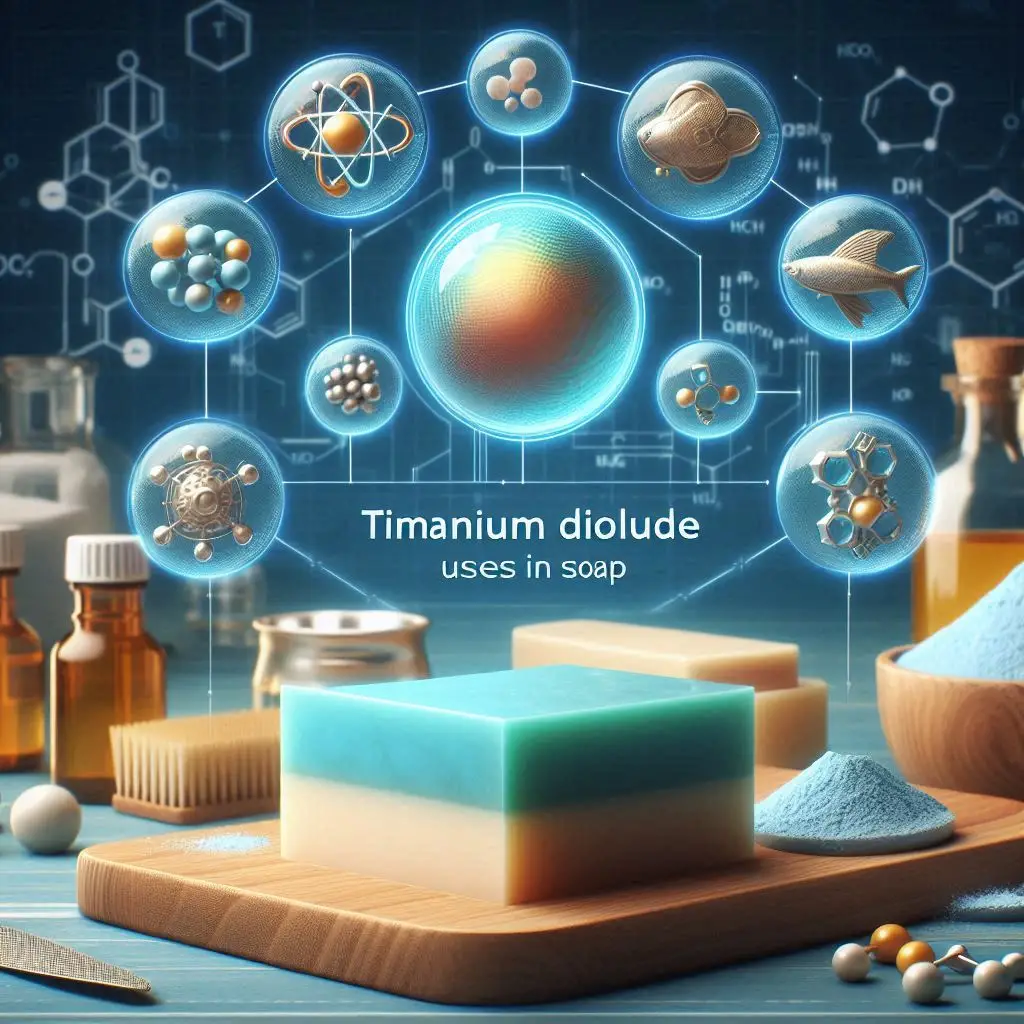
Titanium dioxide uses in soap
In this exploration of titanium dioxide uses in soap, I explore the ways titanium dioxide is used in soap, looking at how it may be used to improve stability, look better, and make products safer.
Titanium dioxide (TiO2) is a versatile and extensively used substance that is used in many different sectors, including the soap industry. Because of its special qualities, it is a useful component in the making of soap, adding to both the practical and cosmetic elements.
Beyond only enhancing color, titanium dioxide serves a variety of purposes in the production of soap. Because of its many uses as a pigment, stabilizer, opacifier, UV protector, and texture enhancer, it is a very useful component in soap recipes. Manufacturers of soap employ these qualities to produce goods that are not only aesthetically pleasing but also provide improved protection, stability, and user experience.
Demand for soaps that are both visually beautiful and functionally sophisticated is rising as customer tastes continue to change. With its wide spectrum of uses, titanium dioxide is essential to addressing these needs. Titanium dioxide is used in soap formulas to improve the overall quality, safety, and efficacy of the final product, in addition to addressing cosmetic concerns. Titanium dioxide will probably continue to play a crucial part in determining how soap is made in the future as long as research and innovation in the sector are conducted.
Due to continuous innovation, regulatory scrutiny, and environmental concerns, the use of titanium dioxide in soap production is changing. The problem for soap makers is to strike a balance between the practical and cosmetic advantages of titanium dioxide and the need to use safe, sustainable production methods. The future terrain of soap manufacturing will be shaped by the cooperation of producers, researchers, and regulatory agencies as the sector develops, guaranteeing customer safety and effectiveness together with ecologically friendly and aesthetically pleasing goods.
Color Enhancement: Titanium dioxide is mostly used in soap as a colorant. TiO2 gives soap a vivid and brilliant hue because of its remarkable white pigment qualities, giving customers a pleasing visual experience. Titanium dioxide is often added to soap formulations by soap makers to obtain a flawless white hue or to lighten and brighten other colors.
Opacifying Agent: Titanium dioxide contributes to the opacity or cloudiness of soap by acting as an opacifying agent. This feature is very useful for certain kinds of soap, such as creamy or opaque formulas. Customers find the soap more enticing because of the opacifying effect, which improves the soap's perceived quality and aesthetic appeal.
UV Protection: The protective properties of titanium dioxide against ultraviolet (UV) radiation are well recognized. It may provide some skin protection from the sun when added to soap compositions. Because of this, titanium dioxide is a necessary ingredient in specialized soaps, such as those for sensitive skin types or those meant to be used in sun-exposed areas.
Stabilizing Agent: Consistency and stability are two issues that soap compositions often encounter. By halting color changes, rancidity, and other unwanted variations over time, titanium dioxide stabilizes soap. The soap's stability helps it last longer by preserving its desired qualities and look throughout its shelf life.
Texture and Creaminess: Titanium dioxide not only improves the color of soap, but it also adds to its texture. Used in opaque or creamy soap compositions, it may give the finished product a luscious, velvety texture. Making the soap more pleasurable to use and leaving the skin feeling smooth and cared for, improves the user experience overall.
Anti-Bacterial Properties: Titanium dioxide has antibacterial qualities that may improve soap products' safety. This is especially useful for personal hygiene soaps since it provides an additional barrier against dangerous microorganisms. Titanium dioxide is an important part of skin health maintenance because of its antibacterial and cleaning qualities.
Environmental Aspects: Although using titanium dioxide in soap manufacture has several advantages, it is important to take the environment into account when using it. Energy use and trash production are two environmental effects of titanium dioxide mining and processing. To reduce the environmental impact of their goods, manufacturers are increasingly looking into sustainable methods. Examples of these activities include using titanium dioxide that is obtained sustainably or investigating alternative environmentally friendly opacifying agents.
Some soap producers are implementing eco-friendly procedures by using biodegradable formulas and lowering their dependency on non-renewable resources in response to environmental concerns. Green chemistry advances might result in the creation of sustainable titanium dioxide substitutes, guaranteeing that soap manufacturing complies with changing sustainability regulations.
Regulatory Compliance and Safety: These two factors should always come first when using any ingredient in consumer goods. To guarantee consumer safety, the titanium dioxide used in soaps has to adhere to strict regulatory requirements. This involves following labeling guidelines, maintaining purity standards, and making sure there are no pollutants. To make sure their goods live up to industry standards and customer expectations, manufacturers need to remain up to date on the rules that are always changing about substances used in cosmetics, such as titanium dioxide.
Safety research on titanium dioxide is still being conducted, and regulatory agencies are continuously evaluating the results. Even though titanium dioxide is widely accepted to be safe for use in cosmetics, further research emphasizes how crucial it is to strike a balance between product effectiveness and safety.
Novelties and Prospects for the Future:
The soap business is dynamic, with continuous R&D focused on improving product performance and satisfying changing customer demands. The production of nano-sized titanium dioxide particles has been made possible by advancements in nanotechnology, which may increase the sunscreen qualities of soaps and provide better dispersion.
Furthermore, improvements in encapsulation technology could make it possible to add active substances to titanium dioxide soaps, increasing their functional advantages even further. This entails the incorporation of vitamins, antioxidants, and other substances related to skincare, resulting in a novel range of soaps that provide dual advantages of cleansing and skincare enhancement.

